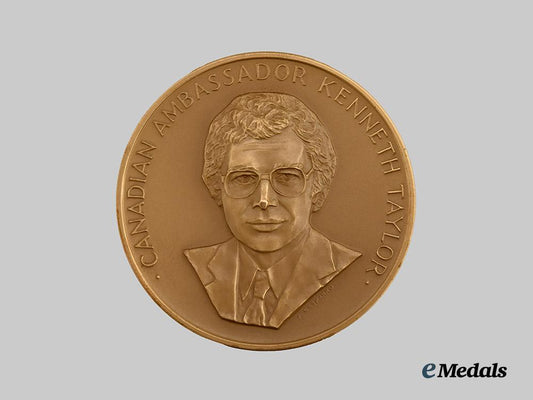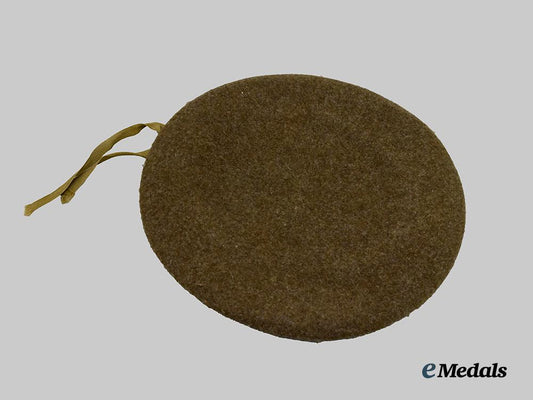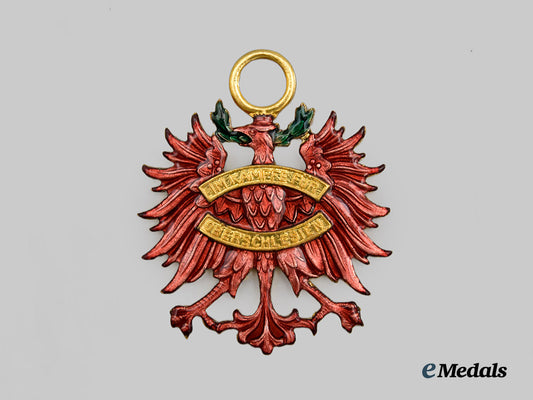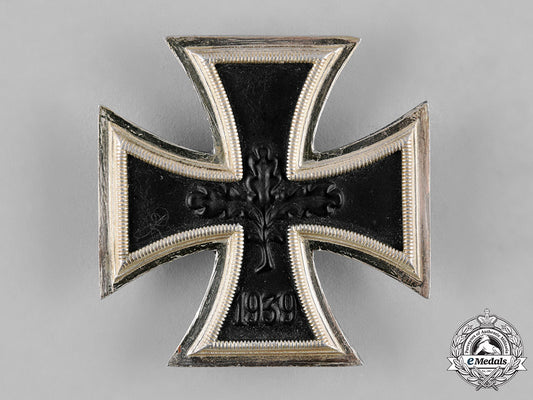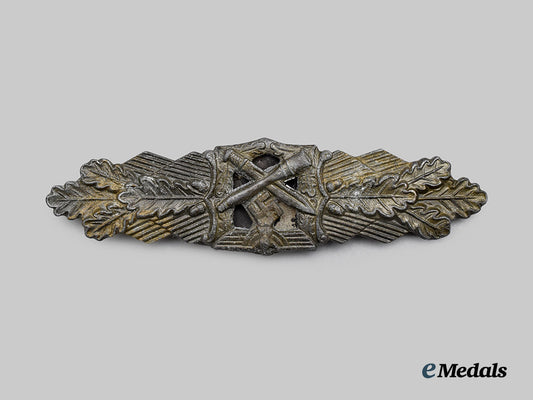
LOADING ...
In response to evolving domestic opinion, eMedals Inc has made the conscious decision to remove the presentation of German Third Reich historical artifacts from our online catalogue. For three decades, eMedals Inc has made an effort to preserve history in all its forms. As historians and researchers, we have managed sensitive articles and materials with the greatest of care and respect for their past and present social context. We acknowledge the growing sentiments put forth by the Canadian public and have taken proactive actions to address this opinion.









A First War Pair & Documents To The 3Rd Canadian Infantry Battalion
A First War Pair & Documents To The 3Rd Canadian Infantry Battalion
SKU: ITEM: C4451
Current Bid:
Your Max Bid:
Bid History:
Time Remaining:
Couldn't load pickup availability
Shipping Details
Shipping Details
eMedals offers rapid domestic and international shipping. Orders received prior to 12:00pm (EST) will be shipped on the same business day.* Orders placed on Canadian Federal holidays will be dispatched the subsequent business day. Courier tracking numbers are provided for all shipments. All items purchased from eMedals can be returned for a full monetary refund or merchandise credit, providing the criteria presented in our Terms & Conditions are met. *Please note that the addition of a COA may impact dispatch time.
Shipping Details
eMedals offers rapid domestic and international shipping. Orders received prior to 12:00pm (EST) will be shipped on the same business day.* Orders placed on Canadian Federal holidays will be dispatched the subsequent business day. Courier tracking numbers are provided for all shipments. All items purchased from eMedals can be returned for a full monetary refund or merchandise credit, providing the criteria presented in our Terms & Conditions are met. *Please note that the addition of a COA may impact dispatch time.
Description
Description
British War Medal (3033227 PTE. G.W. CRUISEY. 3-CAN.INF.); and Victory Medal (3033227 PTE. G.W. CRUISEY. 3-CAN.INF.). Naming is officially impressed, his surname spelled incorrectly with a "Y" that has been added at the end (Cruisey). Un-mounted, replacement ribbons, very dark patina on the BWM, very light contact, near extremely fine. Accompanied by their 10.5 mm x 73 mm Ribbon Bar; miniatures of same (British War Medal: silver, 17.8 mm; and Victory Medal: bronze, 17.7 mm; un-mounted, original ribbons); his Canadian Pay Book for use on Active Service (entries from April 1918 to March 1919, 22 pages plus cover, insert pasted in place on the inside front cover, 95 mm x 142 mm); his Canadian Expeditionary Force Pay Book (summary entries dated April 1919, 28 pages plus cover, 108 mm x 140 mm); his Soldier Settlement Board of Canada "Attestation Under the Soldier Settlement Act, 1917" (numbered "7425", dated July 5, 1919 at Ottawa, Ontario, signature of the Board's Chairman in black ink, printed in black ink on a white paper stock, 151 mm x 200 mm, fold mark); three Photographs (black and white: first photo illustrating twenty-eight soldiers with an "X" marked over Private Cruise's head, reverse with postcard style backer and inscribed "X George Cruise", 86 mm x 140 mm; second photo illustrating a standing Private Cruise in a relaxed pose, reverse inscribed "George Cruise 12", 58 mm x 82 mm; third photo illustrating four soldiers seated upon a cannon, reverse inscribed "Friends of G. Cruise", 51 mm x 60 mm); and a 3rd Infantry Battalion Cap Badge (bronze, maker marked "J.R. GAUNT LONDON" on the reverse, 43.3 mm x 51.5 mm, intact lugs and pin).
Footnote: George William Cruise was born on August 16, 1894 in Langton, Ontario. He was a resident of Connaught Station, Ontario when he signed his Particulars of Recruit Drafted Under Military Service Act 1917 Paper (number 847413) as a Private (3033227) with the 1st Depot Battalion, 1st Central Ontario Regiment, "B" Company, at No. 2 Military District, in Toronto, Ontario, on January 21, 1918, at the age of 23, naming his next-of-kin as his sister, Mrs. Mary Hearn of Galt, Ontario, stating that he had no previous military service, that he was Single, that his religion was Presbyterian and that his trade was that of Farming. During his pre-enlistment Medical Examination conducted at Haileybury, Ontario on November 20, 1917, it was noted that he had had a fracture to his right hip years earlier, causing some shortening of the leg, but no evidence of eversion to his foot and that this was causing him no disability, however, he did have ingrown nails on his big toes. He was nonetheless accepted for military service. Private Cruise embarked Halifax, Nova Scotia on May 16, 1918, aboard the S.S. Valacia, arriving in Liverpool, England on May 27thand was taken on strength by the 12th Reserve Battalion at the 1st Central Ontario Regimental Depot the same day. After three months training in England, he was transferred to the 3rd Infantry Battalion for service in the French theatre, on August 28, 1918, arriving at the Canadian Base Depot in France on the 29th. Four days after arriving in France, he left the Canadian Base Depot for the Canadian Corps Reinforcement Camp on September 2nd, joining them the same day. He joined his new unit, the 3rd Infantry Battalion on September 6th and was placed with 'C' Company, 10 Platoon. Five months after his transfer to the 3rd Infantry Battalion and with hostilities having ceased, he suffered a slight attack of Influenza in February 1919 while in France but made a full recovery. However, he contracted a case of "piles" the same month. Private Cruise returned to England on March 22, 1919 and was posted to Bramshott, where he was to sign his War Service Gratuity declaration on March 25th, stating that he had served one year and 70 days service with the 1st Central Ontario Regimental Depot and the 3rd Infantry Battalion, and changed his forwarding address to Galt, Ontario. In his Medical History of an Invalid, dated March 26, 1919 at Bramshott, it was noted that he had contracted Measles in his childhood. The doctor recounted the story as to how Cruise had fractured his right hip: while living in Langton in 1908, around the age of 14, Cruise had fallen on the ice while playing hockey after being body checked. He received a surgical procedure, which entailed having his leg put up in splints, with an extension method used. However, his right leg ended up being one half inch shorter than his good left leg. The doctor noted that Cruise "states (his) leg (gets) tired some when doing route marches (but he is) always able to carry on", concluding that the disability would be permanent. He was re-examined for the "piles" he contracted the previous February, but no disability was determined at the time of his examination and he was not operated upon. He was subsequently declared Category "A" (Fit for General Service). He was struck off strength to Canada on April 14, 1919, embarking Southampton, England aboard the S.S. Olympic. Private George William Cruise was discharged upon demobilization at No. 2 District Depot in Toronto, on April 24, 1919, entitled to wear the War Service Badge, Class "A", number 280374 and credited with having served in Canada, England and France. For his First World War service, he was awarded the British War Medal and the Victory Medal. That summer, he filed an application with the Soldier Settlement Board of Canada for a farm loan. In his Soldier Settlement Board of Canada "Attestation Under the Soldier Settlement Act, 1917", numbered "7425", dated July 5, 1919 at Ottawa, Ontario, it stated that "The undersigned attests that Geo Wm Cruise formerly No 3033224 in 1st Depot Bn C.O.R. has furnished evidence satisfactorily establishing a claim as a "settler" under the Soldier Settlement Act, 1917, subject, in the event of a loan being applied for, to ability to farm and repay the loan being established to the satisfaction of the Board, and subject to all other provisions of the said Act or regulations thereunder or amendments thereto, and that the said claim is hereby approved.", the document signed by the Board's Chairman.
British War Medal (3033227 PTE. G.W. CRUISEY. 3-CAN.INF.); and Victory Medal (3033227 PTE. G.W. CRUISEY. 3-CAN.INF.). Naming is officially impressed, his surname spelled incorrectly with a "Y" that has been added at the end (Cruisey). Un-mounted, replacement ribbons, very dark patina on the BWM, very light contact, near extremely fine. Accompanied by their 10.5 mm x 73 mm Ribbon Bar; miniatures of same (British War Medal: silver, 17.8 mm; and Victory Medal: bronze, 17.7 mm; un-mounted, original ribbons); his Canadian Pay Book for use on Active Service (entries from April 1918 to March 1919, 22 pages plus cover, insert pasted in place on the inside front cover, 95 mm x 142 mm); his Canadian Expeditionary Force Pay Book (summary entries dated April 1919, 28 pages plus cover, 108 mm x 140 mm); his Soldier Settlement Board of Canada "Attestation Under the Soldier Settlement Act, 1917" (numbered "7425", dated July 5, 1919 at Ottawa, Ontario, signature of the Board's Chairman in black ink, printed in black ink on a white paper stock, 151 mm x 200 mm, fold mark); three Photographs (black and white: first photo illustrating twenty-eight soldiers with an "X" marked over Private Cruise's head, reverse with postcard style backer and inscribed "X George Cruise", 86 mm x 140 mm; second photo illustrating a standing Private Cruise in a relaxed pose, reverse inscribed "George Cruise 12", 58 mm x 82 mm; third photo illustrating four soldiers seated upon a cannon, reverse inscribed "Friends of G. Cruise", 51 mm x 60 mm); and a 3rd Infantry Battalion Cap Badge (bronze, maker marked "J.R. GAUNT LONDON" on the reverse, 43.3 mm x 51.5 mm, intact lugs and pin).
Footnote: George William Cruise was born on August 16, 1894 in Langton, Ontario. He was a resident of Connaught Station, Ontario when he signed his Particulars of Recruit Drafted Under Military Service Act 1917 Paper (number 847413) as a Private (3033227) with the 1st Depot Battalion, 1st Central Ontario Regiment, "B" Company, at No. 2 Military District, in Toronto, Ontario, on January 21, 1918, at the age of 23, naming his next-of-kin as his sister, Mrs. Mary Hearn of Galt, Ontario, stating that he had no previous military service, that he was Single, that his religion was Presbyterian and that his trade was that of Farming. During his pre-enlistment Medical Examination conducted at Haileybury, Ontario on November 20, 1917, it was noted that he had had a fracture to his right hip years earlier, causing some shortening of the leg, but no evidence of eversion to his foot and that this was causing him no disability, however, he did have ingrown nails on his big toes. He was nonetheless accepted for military service. Private Cruise embarked Halifax, Nova Scotia on May 16, 1918, aboard the S.S. Valacia, arriving in Liverpool, England on May 27thand was taken on strength by the 12th Reserve Battalion at the 1st Central Ontario Regimental Depot the same day. After three months training in England, he was transferred to the 3rd Infantry Battalion for service in the French theatre, on August 28, 1918, arriving at the Canadian Base Depot in France on the 29th. Four days after arriving in France, he left the Canadian Base Depot for the Canadian Corps Reinforcement Camp on September 2nd, joining them the same day. He joined his new unit, the 3rd Infantry Battalion on September 6th and was placed with 'C' Company, 10 Platoon. Five months after his transfer to the 3rd Infantry Battalion and with hostilities having ceased, he suffered a slight attack of Influenza in February 1919 while in France but made a full recovery. However, he contracted a case of "piles" the same month. Private Cruise returned to England on March 22, 1919 and was posted to Bramshott, where he was to sign his War Service Gratuity declaration on March 25th, stating that he had served one year and 70 days service with the 1st Central Ontario Regimental Depot and the 3rd Infantry Battalion, and changed his forwarding address to Galt, Ontario. In his Medical History of an Invalid, dated March 26, 1919 at Bramshott, it was noted that he had contracted Measles in his childhood. The doctor recounted the story as to how Cruise had fractured his right hip: while living in Langton in 1908, around the age of 14, Cruise had fallen on the ice while playing hockey after being body checked. He received a surgical procedure, which entailed having his leg put up in splints, with an extension method used. However, his right leg ended up being one half inch shorter than his good left leg. The doctor noted that Cruise "states (his) leg (gets) tired some when doing route marches (but he is) always able to carry on", concluding that the disability would be permanent. He was re-examined for the "piles" he contracted the previous February, but no disability was determined at the time of his examination and he was not operated upon. He was subsequently declared Category "A" (Fit for General Service). He was struck off strength to Canada on April 14, 1919, embarking Southampton, England aboard the S.S. Olympic. Private George William Cruise was discharged upon demobilization at No. 2 District Depot in Toronto, on April 24, 1919, entitled to wear the War Service Badge, Class "A", number 280374 and credited with having served in Canada, England and France. For his First World War service, he was awarded the British War Medal and the Victory Medal. That summer, he filed an application with the Soldier Settlement Board of Canada for a farm loan. In his Soldier Settlement Board of Canada "Attestation Under the Soldier Settlement Act, 1917", numbered "7425", dated July 5, 1919 at Ottawa, Ontario, it stated that "The undersigned attests that Geo Wm Cruise formerly No 3033224 in 1st Depot Bn C.O.R. has furnished evidence satisfactorily establishing a claim as a "settler" under the Soldier Settlement Act, 1917, subject, in the event of a loan being applied for, to ability to farm and repay the loan being established to the satisfaction of the Board, and subject to all other provisions of the said Act or regulations thereunder or amendments thereto, and that the said claim is hereby approved.", the document signed by the Board's Chairman.









You May Also Like
Canada, United States. Canadian Ambassador Kenneth Taylor Congressional Bronze Medal 1980
M0444-34
Canada. Second War Canadian-Made Army Beret
M0444-28
Germany, Weimar Republic. A Freikorps Oberland Tyrolean Assault Troops Eagle
G57226
Germany, Federal Republic. A 1939 Iron Cross I Class, Post-1957 Reissue
G41269
Germany, Wehrmacht. A Close Combat Clasp, Gold Grade, by Rudolf Souval
G57059
-
Canada, United States. Canadian Ambassador Kenneth Taylor Congressional Bronze Medal 1980
M0444-34
Add to CartRegular price $100 USDRegular price $0 USD Sale price $100 USDUnit price / per -
Canada. Second War Canadian-Made Army Beret
M0444-28
Add to CartRegular price $150 USDRegular price $0 USD Sale price $150 USDUnit price / per -
Germany, Weimar Republic. A Freikorps Oberland Tyrolean Assault Troops Eagle
G57226
Add to CartRegular price $350 USDRegular price $0 USD Sale price $350 USDUnit price / per -
Germany, Federal Republic. A 1939 Iron Cross I Class, Post-1957 Reissue
G41269
Add to CartRegular price $70 USDRegular price $0 USD Sale price $70 USDUnit price / per -
Germany, Wehrmacht. A Close Combat Clasp, Gold Grade, by Rudolf Souval
G57059
Add to CartRegular price $350 USDRegular price $0 USD Sale price $350 USDUnit price / per
Do you have a similar item you are interested in selling?
Please complete the form and our client care representatives will contact you.
Sell ItemSell to eMedals
Starting the Selling Process
To begin the sale of your item(s), in house experts will need to carry out an initial evaluation to judge how to proceed in the sale. Here, we will determine the authenticity as well as the approximate value of the item(s) using images and descriptions.
Initial Evaluation
In order to better assess how to proceed with your sale, an initial evaluation must be completed of your items. A quick and simple method, upload multiple images of your item(s) using our online submission form with any relevant comments. This form can be found below. Otherwise, we are happy to assess your item(s) by email, phone, or in office.
In House Assessment
Once we have completed an initial evaluation, you will be contacted by an eMedals representative, either by email or phone, to discuss shipment. All items offered on eMedals.com are subject to in house inspection and evaluation prior to listing. This process is to ensure all items offered are authentic, described correctly, properly researched, and listed using professionally photography.
Shipment of Your Item(s)
To ship your item(s), please ensure that each item is packed carefully and securely. If you have any questions or concerns regarding the shipment process, including those about methods, customs, insurance, please contact our general inbox info@emedals.comfor immediate assistance. Shipping Address: 3245 Harvester RoadUnit 15Burlington, OntarioL7N 3T7 Canada
Offer
eMedals is happy to directly purchase medals and militaria from both the public and collectors alike. Here, once an item(s) has been assessed using images, delivered to our office and inspected, a purchase offer is then made. If accepted, payment is made in a timely fashion making an eMedals purchase a prompt transaction.
Bid History

Item : C4451
A First War Pair & Documents To The 3Rd Canadian Infantry Battalion
| Bidder | Amount | Submitted |
|---|
Buyer's Premium
All winning bids are subject to a Buyer's Premium of 22% which is in addition to the final hammer price.
Twenty-Two Percent (22%) of the Hammer Price
Confirm your bid of USD?
By submitting this bid, you agree to eMedals Inc.’s Terms & Conditions.
Not Verified !
Your account is currently not verified to participate in auctions. Please log in, or apply for verification Here or Contact us for more information.
Sign in- Choosing a selection results in a full page refresh.
- Opens in a new window.


















